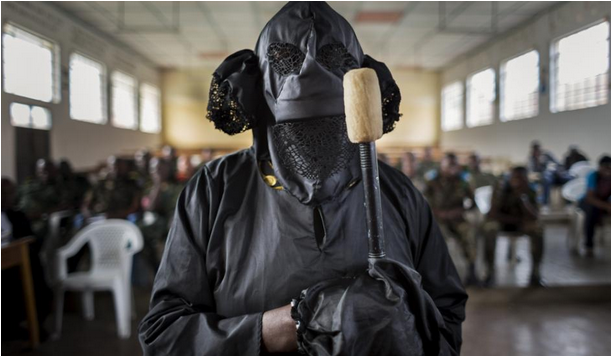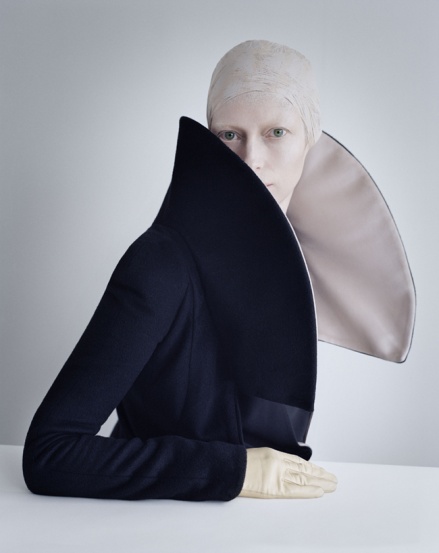agoraphobic fashion
Tuesday, 28 July 2020
Wednesday, 16 November 2016
THE FASHION SYSTEM. By Roland Barthes. NYT Book Review Clothing as Language By ANATOLE BROYARD Published: July 2, 1983
Books of The Times; Clothing as Language
By ANATOLE BROYARD
Published: July 2, 1983
- GOOGLE+
- SHARE
- REPRINTS
THE FASHION SYSTEM. By Roland Barthes. Translated from the French by Matthew Ward and Richard Howard. 303 pages. Hill & Wang. $20.50.
Inside the semiologist in Roland Barthes there was a brilliant writer struggling to get out. In books like ''The Eiffel Tower,'' ''Barthes on Barthes,'' ''Mythologies'' and ''The Lover's Discourse,'' he was the most interesting talent to appear in France since Sartre and Camus. When he died in 1980, still in his early 60's, Mr. Barthes was just shaking free of semiology and realizing himself as an acute and witty critic of culture.
Though the French are famous for their mastery of concrete things -such as food, fashion and savoir vivre - they also have a perverse weakness for the abstract. They love to chase the infinite and the absolute, to flirt with vast promises. Like their notorious government bureaucracy, their literature is periodically strangled by a romance with the idea of structure. Writers like Foucault, Levi-Straus, Lacan and Derrida - to name just a few - take to structure as Baudelaire took to vice or hashish.
This obsession with structure seems to arise out of a desire to say not simply all there is to say on a given subject, but to say too much. Just as the poet maudit, or cursed poet, goes too far in his rhetoric, so does the French social scientist. It is as if many of them are torn, like Barthes, by the desire to be a poet, to make rhetorical structures.
Nobody had a better eye for fashions - in language, in behavior, in anything - than Roland Barthes. And so, when we open ''The Fashion System,'' which was first published in 1967, we expect semiology to be put at the service of fashion. But the book does just the opposite: it uses fashion to demonstrate how semiology works. It consists, for the most part, of sentences like this: ''Within the matrix, on the contrary, the syntagmatic relation is constrained; it is a relation of solidarity or double implication which unites the object, the support, and the variant.'' Though here and there the real world of Barthes breaks through, ''The Fashion System'' is semiology with a vengeance.
For those who are not sure what semiology is, it might be simply defined as the interpretation of a culture's signs, remembering that just about everything may be taken as a sign. In this case, the sign - fashion - is so light and so fragile that the effect of the ponderous semiotic structure is often comical, if not grotesque. It is as if high fashion models were to be dressed in full suits of armor.
What is being analyzed here is the ''translation'' of clothing into language, for as Mr. Barthes observes, rather wistfully, ''man is doomed to articulated language.'' Without discourse, he says, there is no fashion, and this may be an overstatement, for it suggests that the object itself, the natural garment, has no interest. As if he suffers from an uncontrollable hunger or lust for eating, Mr. Barthes sometimes overgeneralizes. One is tempted to say that semiology is the science of overgeneralization.
Yet there are good perceptions, too, in ''The Fashion System.'' The natural writer in Mr. Barthes cannot be entirely kept down. The fashion text, he says, is a technique for ''opening the invisible.'' Description is ''speech without static.'' Fashion is least literary when dealing with the garment itself; it reserves ''the luxury of connotation for the world, for the garment's elsewhere.'' Because it always ''feels guilty of futility,'' fashion opposes this guilt with an insistent rhetoric.
But it is an empty rhetoric, according to Mr. Barthes, one that has no knowledge of evil, that never speaks of love, that resists pathos and is constantly ''euphoric.'' Like a novel in which nothing happens, fashion is ''defined by the infinite variation of a single tautology.'' It is ''a kind of machine for maintaining meaning without ever fixing it.'' This meaning ''is distributed according to a kind of revolutionary grace.''
For his analysis, Mr. Barthes uses the magazines Elle and Le Jardin des Modes for the years 1958-59, and we can see, even through the semiology, how fashion has changed. If we were to browse through contemporary magazines, it might seem that fashion - or at least its sullen models - is now acquainted with evil, that it is disappointed in all love but self-love, and is just as friendly to pathos as it is to euphoria. Certainly, women no longer see themselves as ''sublime and childlike.''
Like fashion, of which it is certainly an example, semiology, too, might be characterized as a novel in which nothing happens. It also resembles a kind of machine for maintaining meaning without ever fixing it. Like the subject of this book, Mr. Barthes is so rapt in his analysis, that we can hardly recognize him. It is as if ''The Fashion System'' was an immense and melancholy pun on his situation as a writer at that time.
Illustrations: photo of Roland Barthes
Monday, 17 August 2015
women testify in Democratic Republic Congo war rape trial

Congrats, @DianaZAlhindawi. Your photos of women bravely testifying in #DRC are phenomenal. http://www.newsweek.com/photographs-landmark-rape-trial-democratic-republic-congo-win-top-prize-363218?piano_d=1&utm_content=buffer75974&utm_medium=social&utm_source=facebook.com&utm_campaign=buffer … pic.twitter.com/D0iuPbITHS
see:
Sunday, 14 December 2014
Christian Loring veil
so delighted to get shots of this chained veil which was reminding me of gareth pugh
Wednesday, 11 December 2013
Friday, 2 November 2012
Saturday, 29 September 2012
Saturday, 24 March 2012
Friday, 16 March 2012
Saturday, 3 March 2012
Thursday, 1 December 2011
Monday, 21 November 2011
Security and the State Department go together like hamburgers and mud.
Security and the State Department go together like hamburgers and mud.
Subscribe to:
Comments (Atom)














